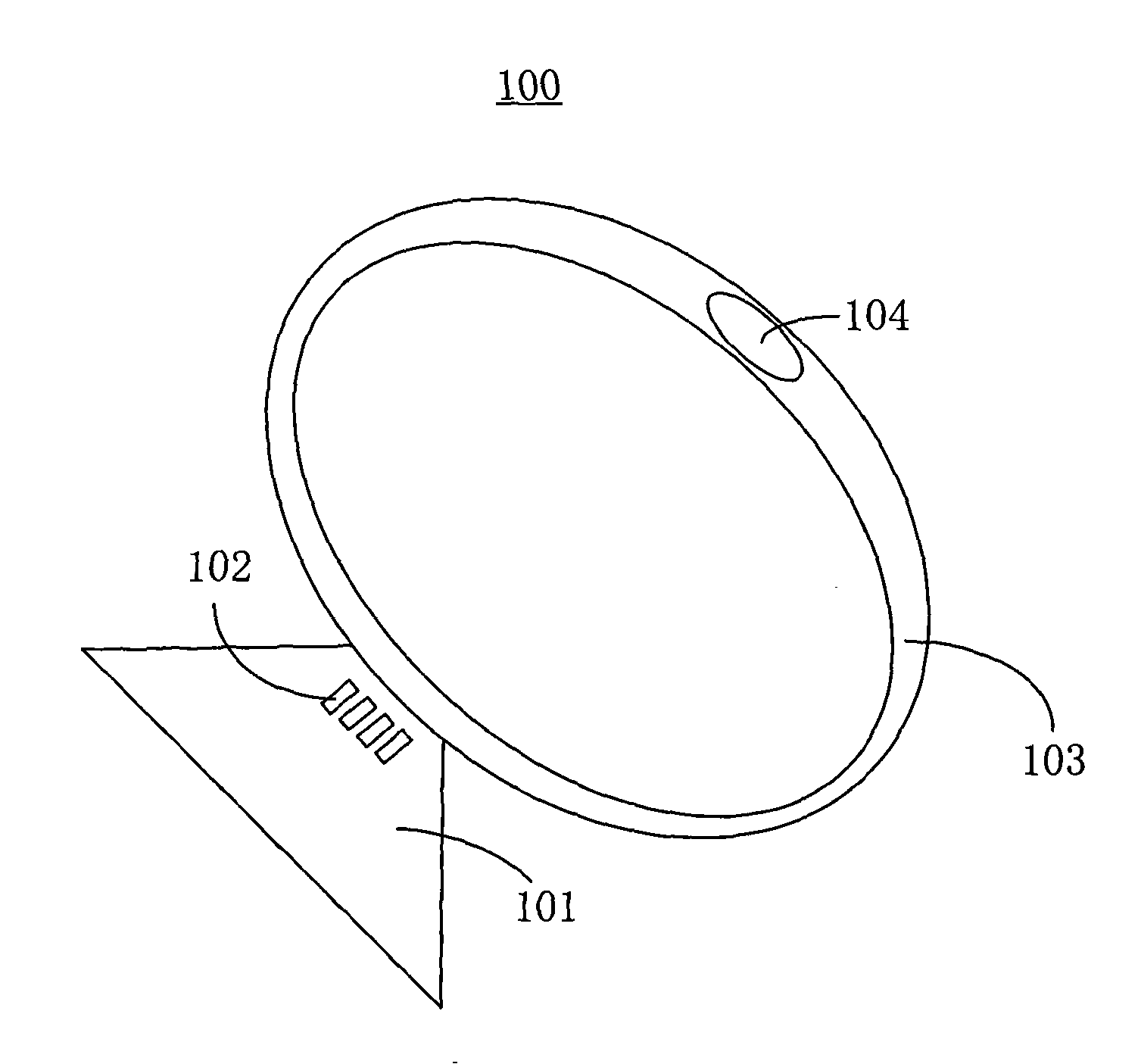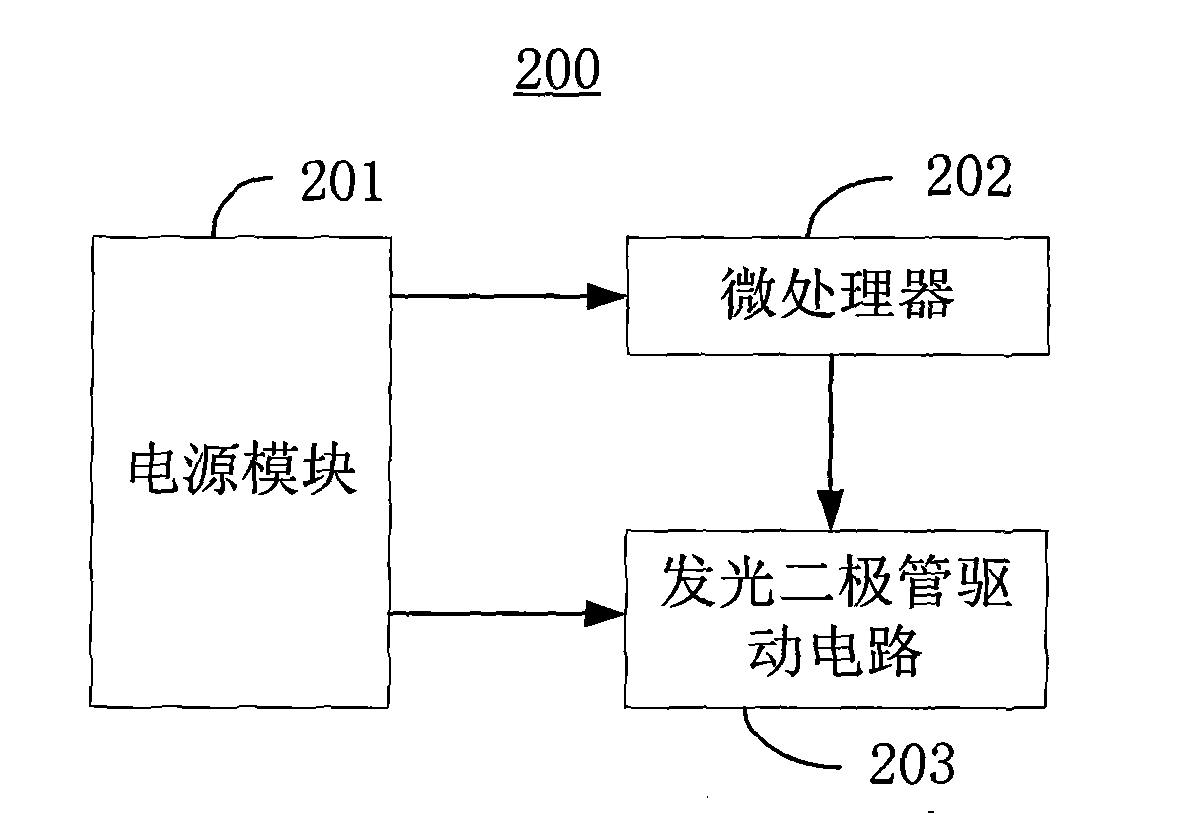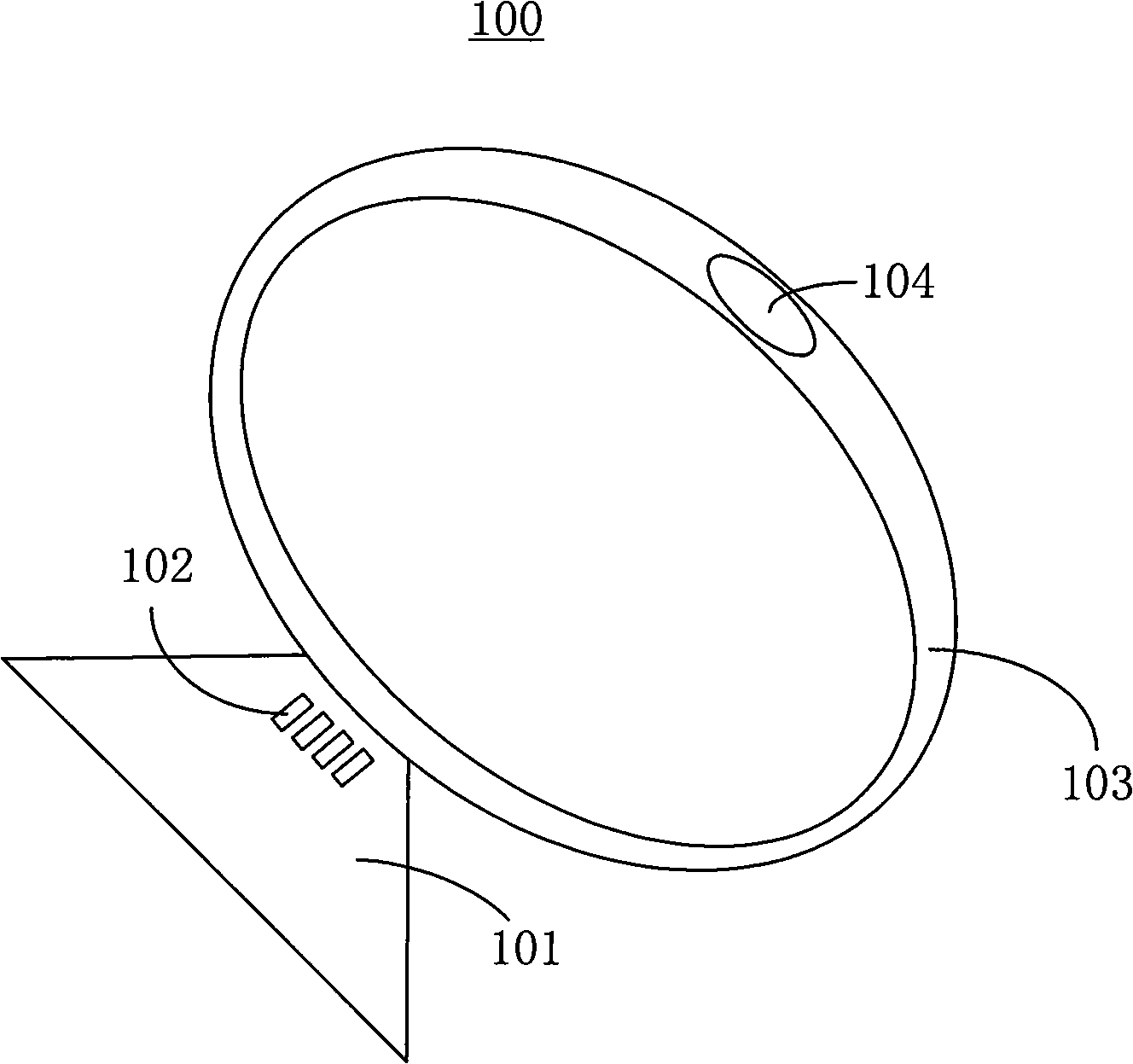Biological vision assisting system
A biological and object technology, applied in the field of biological vision aid system, to achieve the effect of restoring visual function
- Summary
- Abstract
- Description
- Claims
- Application Information
AI Technical Summary
Problems solved by technology
Method used
Image
Examples
Embodiment Construction
[0024] The biological vision aid system includes a pharmaceutical carrier containing a recombinant lentiviral vector, a positioning device, an injection device and a light emitting device.
[0025] The recombinant lentiviral vector carries a light-sensitive gene or its functional fragment regulated by a cell-specific promoter. The gene encoding light-sensitivity may be an excitatory channel protein gene (Channelrhodopsin-2, ChR2) or a gene having the same function as ChR2 (such as ChR2-310, Chop2 or Chop2-310). The ChR2 protein is a rhodopsin originating from the unicellular green alga Chlamydomonas Reinhardtii. The rhodopsin protein ChR2 is composed of a molecule of opsin and a chromophore called retinal. ChR2 is sensitive to blue light, which will make Na + Wait for cations to enter the cell and excite the cell. The wavelength range of the blue light is 450nm-490nm, and in particular, ChR2 is most sensitive to the blue light with a wavelength of 470nm.
[0026] The polyn...
PUM
| Property | Measurement | Unit |
|---|---|---|
| wavelength | aaaaa | aaaaa |
Abstract
Description
Claims
Application Information
 Login to View More
Login to View More - R&D
- Intellectual Property
- Life Sciences
- Materials
- Tech Scout
- Unparalleled Data Quality
- Higher Quality Content
- 60% Fewer Hallucinations
Browse by: Latest US Patents, China's latest patents, Technical Efficacy Thesaurus, Application Domain, Technology Topic, Popular Technical Reports.
© 2025 PatSnap. All rights reserved.Legal|Privacy policy|Modern Slavery Act Transparency Statement|Sitemap|About US| Contact US: help@patsnap.com



